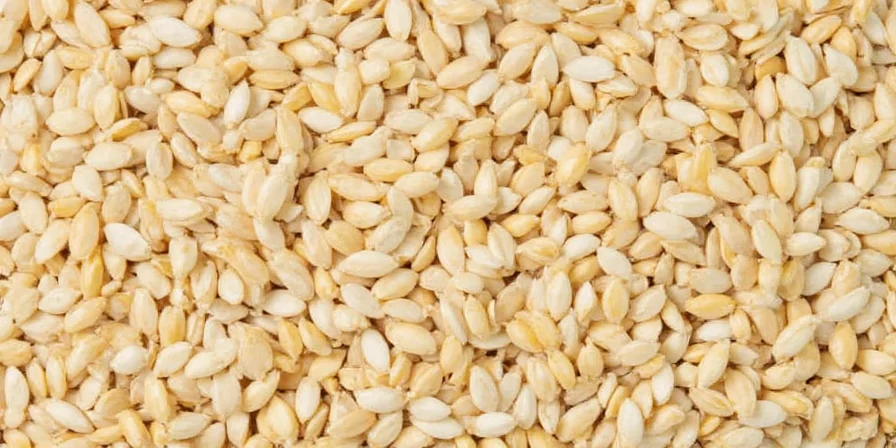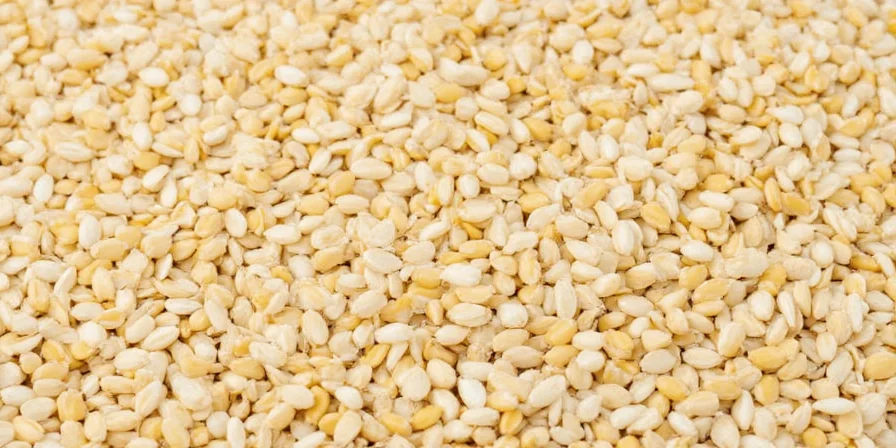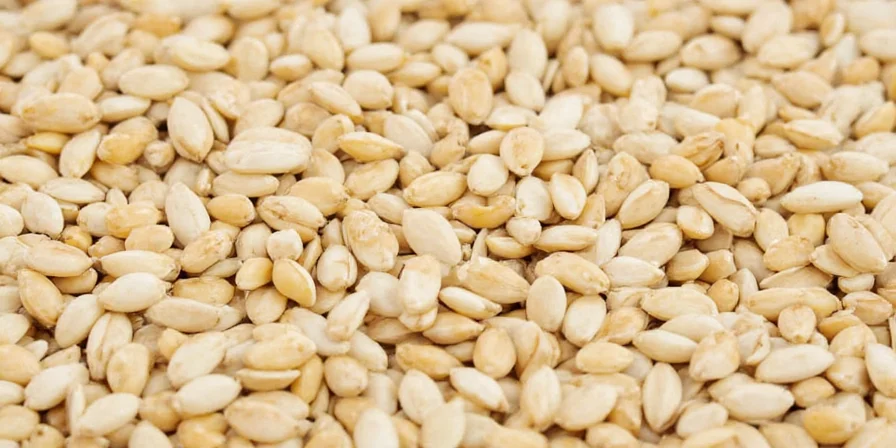White sesame seeds are kitchen staples that add nutty flavor and crunch to countless dishes. This guide reveals exactly how to toast, store, and use white sesame seeds properly - with practical tips that work for home cooks. Discover why your sesame seeds might turn bitter, how long they really last, and the simple storage trick chefs use to keep them fresh.
Stop wasting money on rancid seeds! You'll learn the 90-second toasting method that maximizes flavor, the container that doubles shelf life, and the common mistake that ruins sesame dishes. These actionable steps solve the problems home cooks actually face.
Table of Contents
- White Sesame Seeds: What You Need to Know
- How to Toast Sesame Seeds Perfectly (Every Time)
- Best Way to Store Sesame Seeds: 3 Simple Methods
- Top 5 Ways to Use White Sesame Seeds
- Nutrition Facts: White vs Black Sesame Seeds
- 3 Common Sesame Seed Mistakes to Avoid
- Frequently Asked Questions
White Sesame Seeds: What You Need to Know
White sesame seeds are hulled versions of the original black sesame seeds. The hull removal creates a milder flavor and lighter color preferred in many Western and Asian dishes. Unlike black sesame seeds, white varieties work better for:
- Light-colored sauces and dressings
- Decorating baked goods
- Creating smooth tahini
- Dishes where strong flavor would overpower
They're not "less nutritious" - just different. The hull contains more calcium, but the white seed inside has better-absorbed nutrients. Most Americans use white sesame seeds without realizing there's a difference.

How to Toast Sesame Seeds Perfectly (Every Time)
Toast sesame seeds properly in 5 minutes with this simple method. No special equipment needed:
- Use a dry skillet (no oil needed)
- Spread seeds in single layer
- Heat on medium for 3-4 minutes
- Shake pan every 30 seconds
- Stop when golden (not dark brown)
- Immediately transfer to plate to stop cooking
Pro tip: Toast in small batches. Over-toasting happens fast and creates bitter seeds that ruin your dish. The seeds should smell nutty, not burnt.

Best Way to Store Sesame Seeds: 3 Simple Methods
Sesame seeds go rancid faster than most pantry items. Here's how to keep them fresh:
| Storage Method | Shelf Life | Best For |
|---|---|---|
| Pantry (original package) | 1-2 months | Seeds you'll use quickly |
| Airtight container in pantry | 3-4 months | Regular kitchen use |
| Freezer in sealed bag | 12+ months | Long-term storage |
Key storage tip: Keep seeds away from heat and light. The #1 reason sesame seeds go bad is exposure to kitchen heat sources. Store in dark cupboard away from stove.

Top 5 Ways to Use White Sesame Seeds
Move beyond just sprinkling on top. Try these practical uses:
- Homemade tahini: Blend 1 cup toasted seeds with 1/4 cup oil until smooth. Add salt to taste.
- Sesame crust: Press seeds onto fish or chicken before baking for crunchy texture.
- Salad booster: Add 1 tablespoon to salads for healthy fats and crunch.
- Rice topper: Mix with scallions and soy sauce for instant flavor.
- Baking secret: Add to bread dough or cookie batter for nutty flavor.
For dressings, toast seeds first then blend. The toasting unlocks more flavor and prevents bitter notes.

Nutrition Facts: White vs Black Sesame Seeds
Both types are healthy, but they serve different purposes:
| Nutrient | White Sesame (1 oz) | Black Sesame (1 oz) |
|---|---|---|
| Calcium | 277mg (28% DV) | 351mg (35% DV) |
| Fiber | 3.3g | 4.1g |
| Best Used For | Cooking, baking, dressings | Medicinal uses, dark sauces |
| Flavor Profile | Milder, nuttier | Stronger, earthier |
White sesame seeds work better for most cooking because they don't overpower dishes. Black seeds have more calcium but stronger flavor that doesn't work in light-colored dishes.

3 Common Sesame Seed Mistakes to Avoid
Avoid these errors that ruin sesame dishes:
- Storing in original package: The bag they come in isn't airtight. Transfer to container immediately.
- Over-toasting: They burn in seconds. Golden = perfect, dark brown = bitter.
- Using rancid seeds: Fresh seeds smell nutty. Stale seeds smell like old paint. When in doubt, throw them out.
Spoiler: Most "bad" sesame recipes fail because of stale seeds, not the recipe itself.
Frequently Asked Questions
How can you tell if sesame seeds have gone bad?
Rancid sesame seeds smell like old paint or chemicals instead of nutty. The oil becomes sticky and they taste bitter. When in doubt, toast a few - fresh seeds smell amazing, rancid ones smell unpleasant.
Do white sesame seeds need to be refrigerated?
No, but they last longer in the fridge or freezer. At room temperature in airtight container, they stay fresh 3-4 months. In freezer, up to a year. Never store in original bag - always transfer to airtight container.
What's the difference between white and black sesame seeds?
White seeds are hulled (outer shell removed), black seeds keep their hulls. White seeds have milder flavor better for cooking, black seeds have more calcium but stronger flavor used in specific dishes. Nutritionally similar except for the hull content.
Can you use sesame oil instead of seeds?
Not directly. Oil gives flavor but lacks texture. For dressings, use oil. For crunch in dishes, use seeds. To substitute: 1 tablespoon seeds = 1 teaspoon oil + 1 teaspoon toasted sesame seeds for texture.
Ready to Use Sesame Seeds Like a Pro?
Try the 5-minute toasting method today and notice the difference. Which tip will you use first - better storage, perfect toasting, or new recipes?











 浙公网安备
33010002000092号
浙公网安备
33010002000092号 浙B2-20120091-4
浙B2-20120091-4